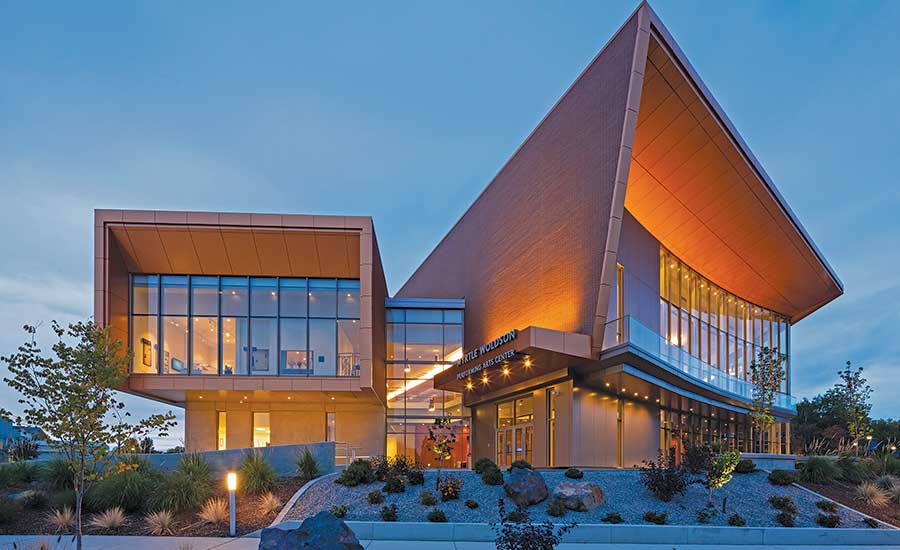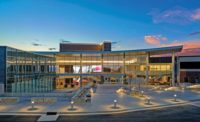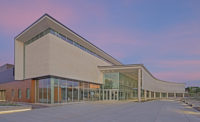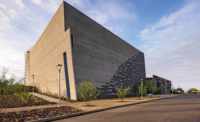Gonzaga University - Myrtle Woldson Performing Arts Center
Spokane, Wash.
Best Project
Owner: Gonzaga University
Lead Design Firm/Architect: Pfeiffer Partners Architects Inc.
Contractor: Lydig Construction
Structural/Civil Engineer: DCI Engineers
MEP Engineer: MW Consulting Engineers
Geotechnical Engineer: GeoEngineers
Associate Architect/Landscape: Bernardo Wills Architects
Subcontractors: Allied Steel; Anatomic Iron Steel Detailing; American Ironworks & Erectors Inc.; Spilker Precast; Central Pre-Mix Concrete Co.; Spokane Rock Products Inc.; Tombari Structural Products Inc.
The multilevel Myrtle Woldson Performing Arts Center offered an intricate lesson in steel and concrete design. Home to a 759-seat concert theater, a 168-seat recital hall, box office and exhibit rooms on the Gonzaga University campus, the main theater includes sloped seating, an orchestra pit, a basement-level stage area for trap room lift space, a counterweight system to change large-scale scenery and lighting, backstage amenities, cantilevered balconies and improved acoustics. Multidiscipline collaboration with BIM modeling ensured clear communication and helped the team visualize framing systems and architectural elements in order to meet specs for sightlines, acoustics and ventilation within the building’s tight tolerances.
DCI Engineers and the acoustics consultants collaborated to create a customized box-within-a-box structural design that mitigated issues with placing the mechanical room directly behind the 90-ft-tall stage tower, necessitated by site restrictions. To ensure that mechanical noise didn’t intrude into the performance hall, the team placed a concrete slab on top of spring isolators in the mechanical room floor. The interior walls were constructed on top of the floating slab, which sits inches inside the demising walls. The 16-in.-thick concrete walls provided enough density for acoustical isolation.
The expansion joint between the center’s main theater and the recital hall makes them two structurally separate buildings so that concurrent performances can be staged without noise disruptions.





Post a comment to this article
Report Abusive Comment